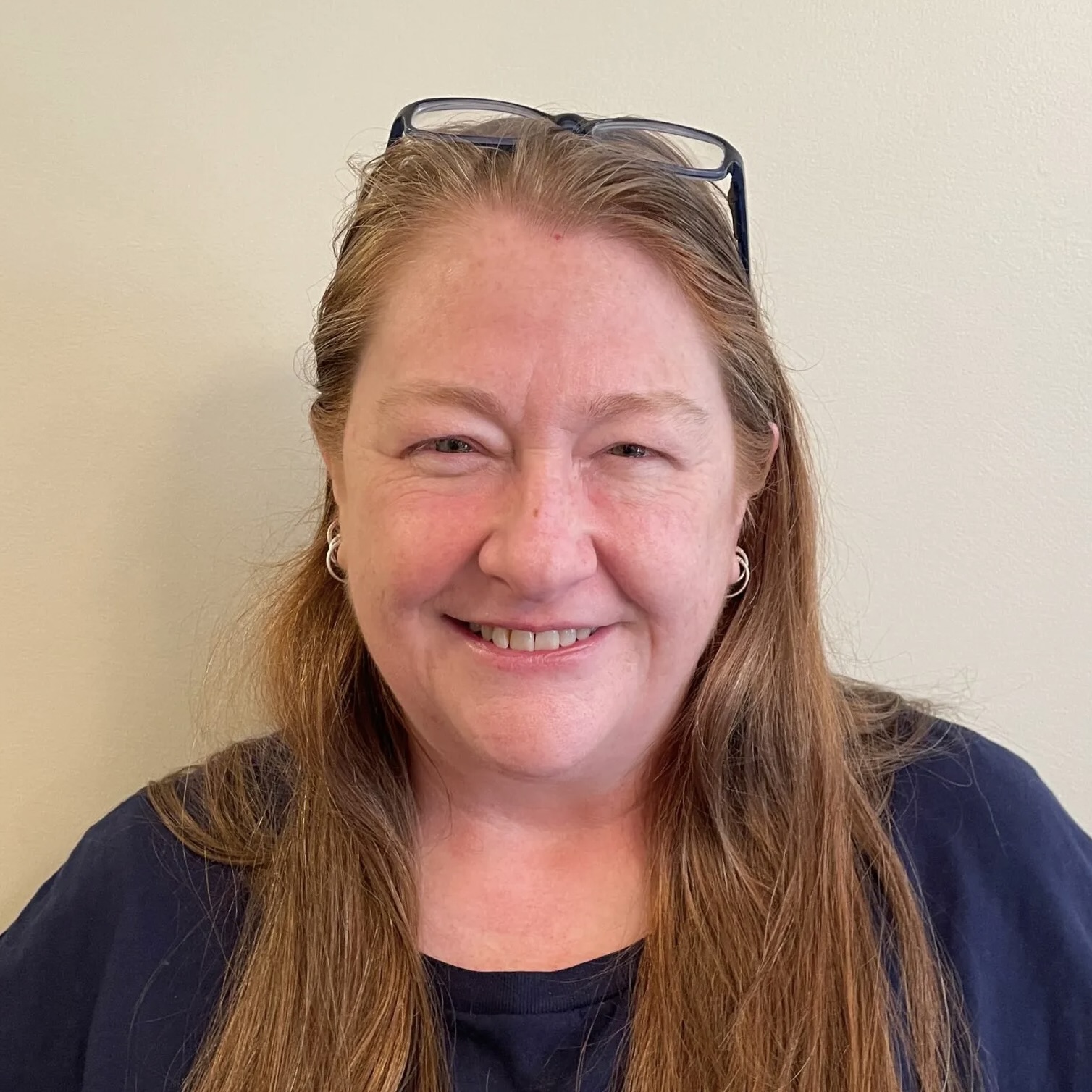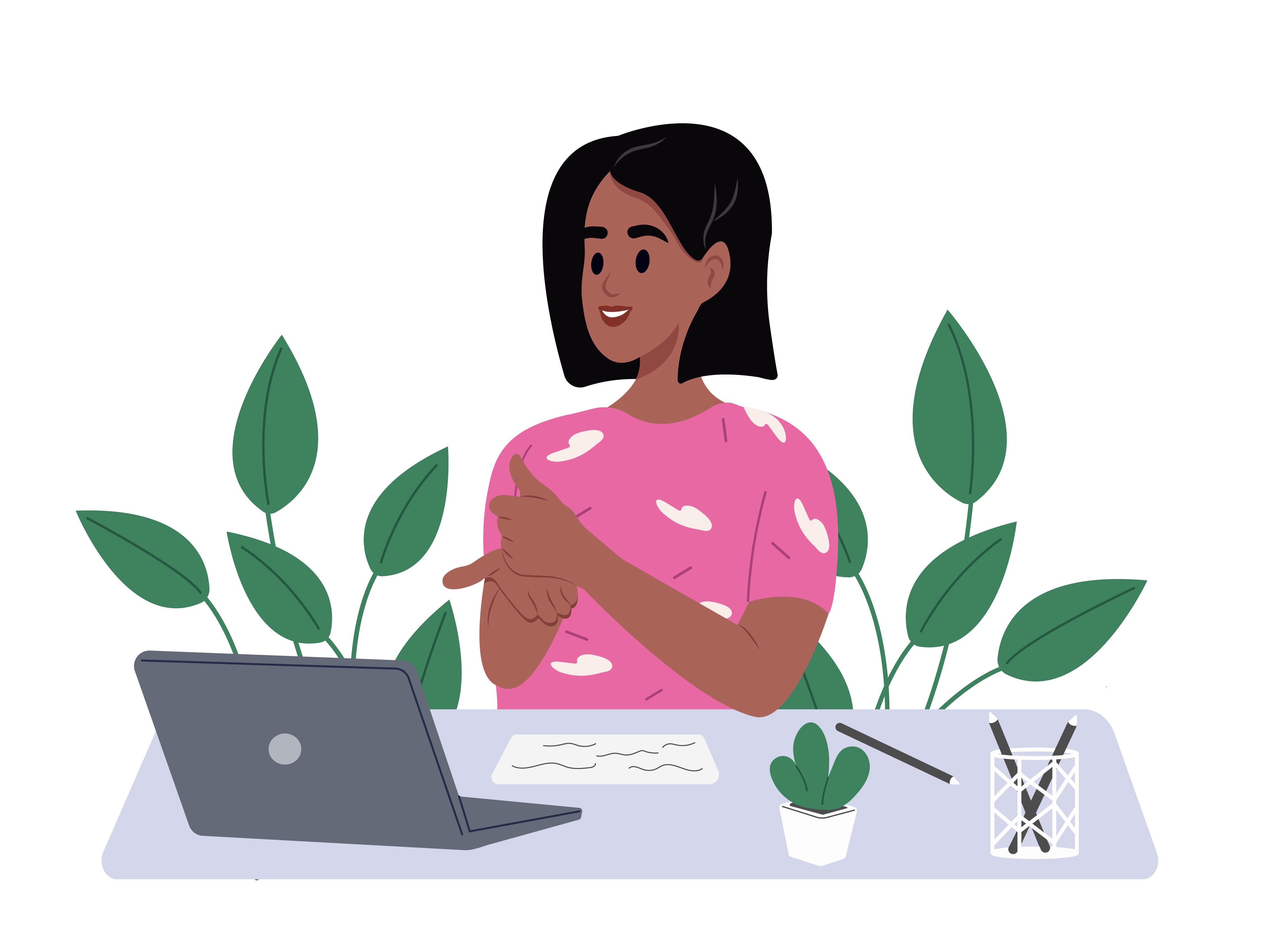Sign Language Is A Human Right for the Deaf
 Rhonda Jennings-Arey is a Certified Deaf Interpreter. She was an American Sign Language professor and Drill Instructor at the University of Virginia College and Graduate School of Arts & Sciences for fourteen years. She has nineteen years of experience teaching college and university students and also taught for over twenty years at the K-12 level. Jennings-Arey co-founded The Virginia School for the Deaf and the Blind’s ASL/English Bilingual Education Training program and helped found the Virginia American Sign Language Teachers Association (ASLTA), where she served as president for eight years.
Rhonda Jennings-Arey is a Certified Deaf Interpreter. She was an American Sign Language professor and Drill Instructor at the University of Virginia College and Graduate School of Arts & Sciences for fourteen years. She has nineteen years of experience teaching college and university students and also taught for over twenty years at the K-12 level. Jennings-Arey co-founded The Virginia School for the Deaf and the Blind’s ASL/English Bilingual Education Training program and helped found the Virginia American Sign Language Teachers Association (ASLTA), where she served as president for eight years.
On December 19, 2017, the generosity of the United Nations General Assembly proclaimed September 23 as the International Day of Sign Languages to raise awareness of the importance of sign language, a human right for the Deaf. The World Federation of the Deaf (WFD) proposed the date, as it marks the day WFD was founded in 1951[1]. This year's theme, "Sign up for Sign Language Rights," urges world leaders to do so. This day is to be celebrated! But why was it necessary?
This is 2024, and many things have improved for the lives of people with disabilities in terms of equipment, access, resources, technology, and even laws. The human right to sign language is still not there. Discrimination continues in the workplace, schools, hospitals, and other settings. For us, that term is “Audism,” which is discrimination against a person’s ability to hear and speak[2].
 In the workplace, employers are often unsure what to do with a Deaf person. It is simple to let an applicant know they did not make the pick because someone else is more qualified to do the job. Because of this, there are incentives where the employer receives tax credit for hiring disabled individuals[3]. Even with the tax credit, employers are hesitant to hire deaf individuals because our communication needs differ significantly. It is also important to note that while the Americans with Disabilities Act (ADA) has brought about significant progress for the Deaf, loopholes or issues still need to be revised. For example, there are still concerns with ASL interpreters in public schools. The requirement for "reasonable accommodations" is frequently construed as providing an ASL interpreter regardless of the interpreter’s qualifications or providing individuals with technology rather than site interpreters, leading to ineffective communication.
In the workplace, employers are often unsure what to do with a Deaf person. It is simple to let an applicant know they did not make the pick because someone else is more qualified to do the job. Because of this, there are incentives where the employer receives tax credit for hiring disabled individuals[3]. Even with the tax credit, employers are hesitant to hire deaf individuals because our communication needs differ significantly. It is also important to note that while the Americans with Disabilities Act (ADA) has brought about significant progress for the Deaf, loopholes or issues still need to be revised. For example, there are still concerns with ASL interpreters in public schools. The requirement for "reasonable accommodations" is frequently construed as providing an ASL interpreter regardless of the interpreter’s qualifications or providing individuals with technology rather than site interpreters, leading to ineffective communication.
Why mention these things? It is to explain that human rights to language, the language a Deaf person is most comfortable with, still have not been achieved.
If one goes back to Aristotle or even the Bible, Deaf people are described as beings who cannot think for themselves because they are not capable of spoken language. The Deaf World, as we refer to it, is still relatively “new” regarding research, historical documentation, and so forth. As a result, many are not aware of the needs of a Deaf person. Each Deaf person varies among other Deaf people in choices of language, desire, and much more. Still, we all agree on one thing, even if we do not say it out loud: We want to be treated like other people, as competent beings with intelligence and knowledge of the world. This does not seem like a complex request, but it is. Unfortunately, hearing people have historically decided what is best for us, Deaf people, in terms of communication and education, as well as other aspects of life. It’s vital to recognize that hearing individuals cannot understand the experience of being Deaf. There are Deaf leaders with the expertise to make decisions that benefit the Deaf community, but disagreements and obstacles often prevent their input from being fully realized.
Some educators oppose using Sign Language, a stance influenced by a long and dark history. This has impacted the parents of Deaf babies a great deal. It includes the push for Cochlear Implants and spoken language only. However, time and again, research has shown that Sign Language, the most natural language of Deaf people, not only does not hinder cognitive abilities but improves them. Dr. Laura Ann Petitto has proved that bilingualism for Deaf people is essential and that the brain does not discriminate against language; humans do[4]. This needs to be addressed.
 Another issue is the decline in Deaf schools due to a law called the Individuals with Disabilities Education Act (IDEA)[5]. IDEA promotes the idea of inclusion in public schools and focuses on the Least Restrictive Environment (LRE) for disabled individuals. One would appreciate the protection of access to education if the reality, more often than not, wasn’t placing a Deaf child in a classroom of people who do not sign or a teacher who does not sign. In contrast, a Deaf school means everyone signs.
Another issue is the decline in Deaf schools due to a law called the Individuals with Disabilities Education Act (IDEA)[5]. IDEA promotes the idea of inclusion in public schools and focuses on the Least Restrictive Environment (LRE) for disabled individuals. One would appreciate the protection of access to education if the reality, more often than not, wasn’t placing a Deaf child in a classroom of people who do not sign or a teacher who does not sign. In contrast, a Deaf school means everyone signs.
We do not oppose providing the best of two worlds to a Deaf child. We want the most natural language, sign language, given to a Deaf child at birth or at least before age three. Then, other languages or modes of communication, such as spoken language, can be introduced. This is why we advocated for Language Equity and Acquisition for Deaf Kids (LEAD-K) bills in every state, although not all states have adopted them yet. It promises the Deaf child that they, too, are “kindergarten ready” because going to school without a solid social language foundation is not conducive to learning academic concepts. This is illustrated by the Cummins models of Basic Interpersonal Communication Skills (BICS), aka the social language of a child, where developed conversational abilities help bridge academic mastery (CALP)[6]. Therefore, full access to a natural language is crucial to prevent language deprivation, without which the individual does not know how to advocate for themselves or even try for a career they so richly deserve. This is a domino effect where sign language is not celebrated or valued, leading to the issues Deaf adults face and the world against them.
Why was an International Day of Sign Language necessary? The answer is this: We have yet to arrive at a place where Sign Language is considered a priority or human right.
====
Footnote: The United Nations Convention on the Rights of Persons with Disabilities (CRPD), adopted in December 2006, has brought attention to similar issues with impact[1]. For various reasons, the United States has not ratified CRPD[7]. WFD continues to advocate for the rights of Deaf people.

References:
[1] United Nations: International Day of Sign Languages 23 September. Retrieved from https://www.un.org/en/observances/sign-languages-day.
[2] Gallaudet University: Audism Resources. Retrieved from https://gallaudet.edu/deaf-studies/deaf-studies-digital-journal/audism-resources/.
[3] IRS: Tax Benefits for Businesses who have Employees with Disabilities. Retrieved from https://www.irs.gov/businesses/small-businesses-self-employed/tax-benefits-for-businesses-who-have-employees-with-disabilities#:~:text=The%20maximum%20tax%20credit%20ranges,people%20with%20disabilities%20and%20 veterans.
[4] Visual Language and Visual Learning: Revolutionizing the Science of Learning. Retrieved from https://vl2.gallaudet.edu/news/revolutionizing-the-science-of-learning.
[5] Individuals with Disabilities Education Act. Retrieved from https://sites.ed.gov/idea/.
[6] What are BICS and CALP? Retrieved from chrome-extension://efaidnbmnnnibpcajpcglclefindmkaj/https://education.nsw.gov.au/content/dam/main-education/teaching-and-learning/curriculum/multicultural-education/eald/urh/What_are_BICS_and_CALP.pdf.
[7] The Leadership Conference on Civil and Human Rights: The United States Still Hasn’t Ratified the Disability Rights Treaty. Retrieved from https://civilrights.org/blog/the-united-states-still-hasnt-ratified-the-disability-rights-treaty/.
Additional Resources:
ADA Requirements: Effective Communication. Retrieved from https://www.ada.gov/resources/effective-communication/.
Hall, M., Hall, W., & Caselli, N. (2019). Deaf Children Need Language, Not (Just) Speech. Retrieved from https://journals.sagepub.com/doi/10.1177/0142723719834102.
LEAD-K Key Facts Document. Retrieved from chrome-extension://efaidnbmnnnibpcajpcglclefindmkaj/https://www.lead-k.org/wp-content/uploads/2016/08/LEAD-K-Website-At-A-Glance-FAQ.pdf.
The Legal Recognition of National Sign Languages. Retrieved from https://wfdeaf.org/news/the-legal-recognition-of-national-sign-languages/.
- Testing, Diagnosing, and Treating Primary Aldosteronism: A Leading Cause of Hard-to-Treat Hypertension
- Life at the Top: Climate Change in Utqiaġvik, Alaska
- The Only Thing We Have to Fear is Fear Itself
- UVA Club of Tidewater: Hoos at Harbor Park
- UVA Club of Atlanta: Cavs Care - Volunteer Income Tax Assistance Events
- Virginia Club of New York: WahooLaw - Spring Networking Happy Hour